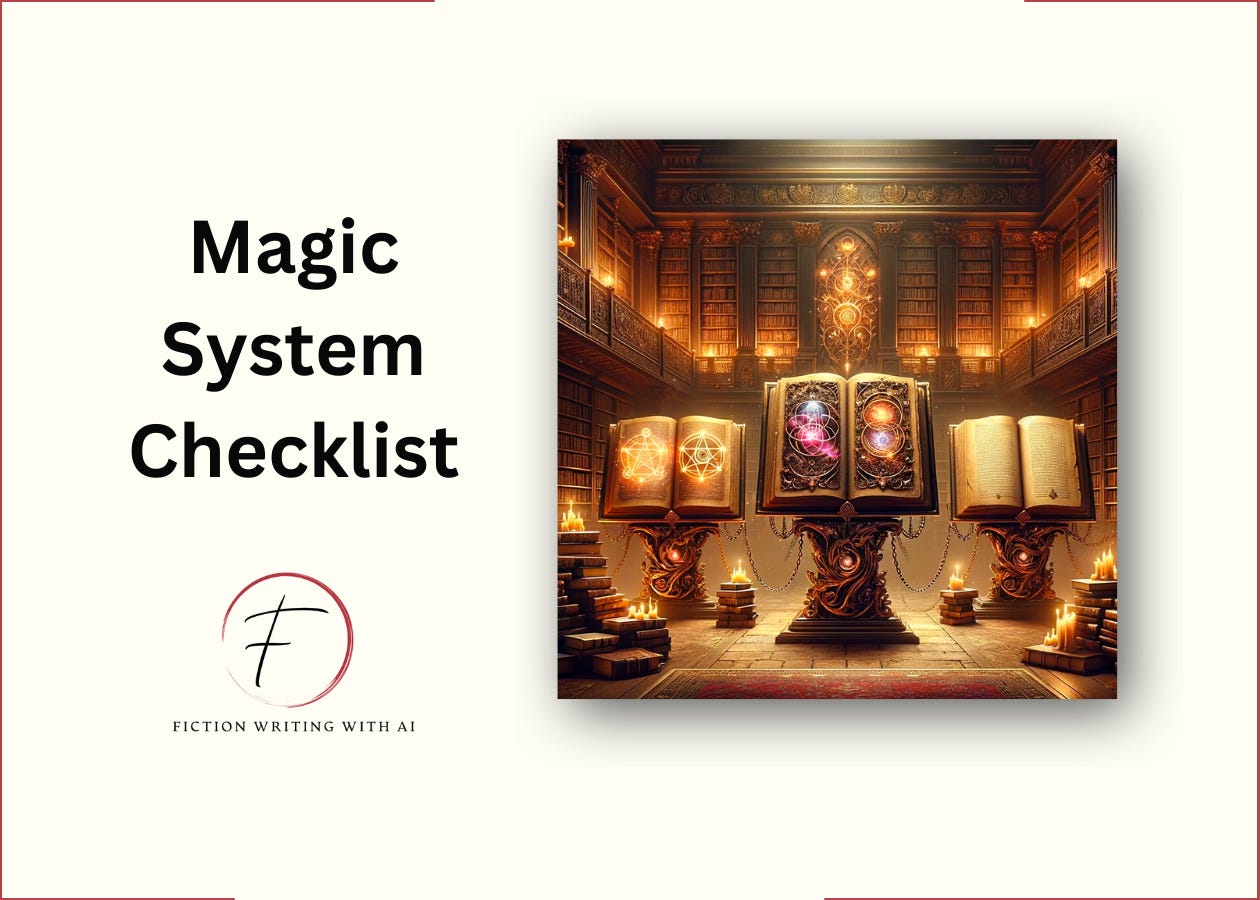Brandon Sanderson’s 3 Laws Of Power: A Prompt For Creating Magical Constraints In Your Fictional World
Hey there!
Fantasy worlds come alive through magic.
But a flimsy magic system can ruin even the most imaginative worlds. Most authors either over-explain their magic systems, stripping away the enchantment, or leave too much to ambiguity, causing confusion and disbelief among readers.
The hard part is finding the sweet spot where your magic enhances the story without overshadowing it.
Your Magic System Can Make Or Break Your Fantasy Story
Creating a system of magic for a fantasy world holds so much intrigue.
Healers curing plagues
Sorcerers summoning fire
Shamans seeing the futures
Magical rules can open portals to awe-inspiring yet believable wonders.
However, effective magic systems remain surprisingly elusive. We've all seen book series suddenly introduce major new powers with little context simply to resolve some third act crisis. Or systems with abilities randomly defined, constrained, amplified to suit plot needs rather than any sensible in-world magic logic.
Thankfully, after 20 years and over 70 books published, mega-successful fantasy author Brandon Sanderson codified 3 reliable principles in his "Laws of Magic" that prevent fantastical powers from compromising world integrity or swallowing narrative foundations.
Let’s take a look.
Brandon Sanderson’s 3 Laws Of Magic
Quick disclaimer: these laws are starting points only.
They exist to serve writers through flexible guidelines, not dogmatic rules. Focus first on the souls of your characters, the inner theme, the grand adventure. Use or bend Sanderson’s concepts as you see fit to make your world feel real.
Sanderson’s First Law: An author’s ability to solve conflict with magic is DIRECTLY proportional to how well the reader understands said magic.
Sanderson’s First Law states that the reader's ability to suspend disbelief in the writer’s magical solution to conflict directly correlates to how well the magic system’s boundaries are established.
The key is laying the ground rules.
What can magic accomplish in your world?
Does it require innate talent or studying ancient texts?
Who wields its power? Mages, elves, or anthropomorphic beings?
The limits must be defined so when magic inevitably resolves a plot point, it doesn’t feel cheap or inexplicable.
Note Sanderson isn’t saying magic must have microscopic technicalities or origins explained. Soft boundaries suit many tales, like Tolkien's Lord of the Rings keeping magical sources vague. But limitations require clarity. Does Gandalf always sense when Bilbo's ring becomes active? Are elvish medicines infinitely potent?
Firm magic alongside firm peril rivets us.
Sanderson's Second Law: Limitations > Powers
While the first law focuses on clearly outlining the magic system's scope, Sanderson’s Second Law highlights that the most interesting magic derives from its constraints rather than capabilities.
The tensions birthed from a magic user’s weaknesses and the system's shortcomings make for captivating drama. Skillfully torturing characters by pitting them against the boundaries of magic taps into readers’ empathy and anxiety. Will the protagonist have enough mana to cast the time stop spell before the demon’s fatal Strike?
Constraints breed creativity, both in the narrative and in the characters who wield the magic.
Sanderson’s Third Law: Expand on what you have already, before you add something new.
The final law suggests deeply exploring current magical elements before introducing new ones.
Sanderson advises writers to exhaust every combination, implication, and possibility innate to an existing magical ability rather than piling on novel spells and enchantments. This depth-over-breadth approach organically grows a magic system while maintaining suspension of disbelief.
If ice powers exist in your world, probe how they influence setting, culture, commerce, and conflict before asking readers to accept lightning bolts shooting from characters’ fingers.
Example: Star Wars “The Force”
Before we move let’s take a look at a classic example so you can see Sanderson’s laws in action.
Scope: The Force is an energy field that only sensitive individuals can wield
Limits: Power depends on strength of connection and mental state. Exceeding limits risks corruption.
Experience: Iconic mind tricks, acrobatic lightsaber fights, Force lightning shooting from fingers.
The force just works. We sense expansive possibility bound by the characters’ training. And we vividly remember how those powers dramatically impact story moments.
How to Craft A Compelling Magic System Without Overcomplicating Your Story
To solve the problem of crafting a well-balanced magic system, let's break it down into actionable steps:
Define the Magic: Start by clearly defining what your magic can and cannot do. This creates a framework for your readers to understand and anticipate the use of magic in your story.
Set Limitations: Establish clear limitations and costs associated with the use of magic. This not only adds depth to your system but also creates natural hurdles and conflicts for your characters to overcome.
Develop Through Expansion: Before introducing new elements of magic, fully explore what you already have. This encourages creativity within constraints and ensures your magic system remains cohesive and integral to the story.
Focus on Characters: Remember, magic should serve the story, not the other way around. Ensure that the use of magic is driven by character decisions and plot development, not just for the sake of showcasing the magic itself.
By following these steps, inspired by Sanderson's Laws of Magic, you can create magical systems that enchant readers while serving the narrative effectively.
How AI Can Help In Crafting Your Magic System
ChatGPT can be instrumental in refining your magic system.
Let’s take a look at 2 different approaches.
1. Idea Generation
Use AI to brainstorm potential limitations and rules for your magic system, ensuring it aligns with Sanderson's laws.
Here’s the prompt:
Keep reading with a 7-day free trial
Subscribe to Fiction Writing With AI to keep reading this post and get 7 days of free access to the full post archives.





